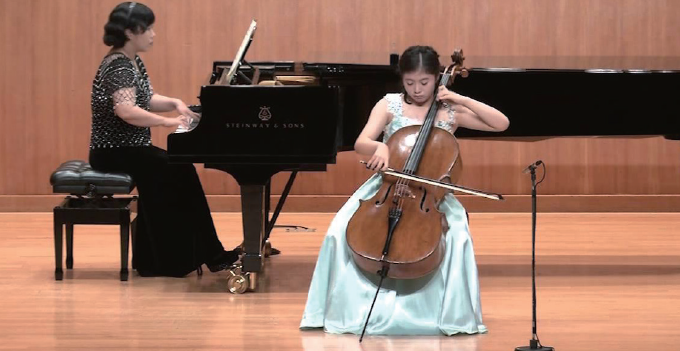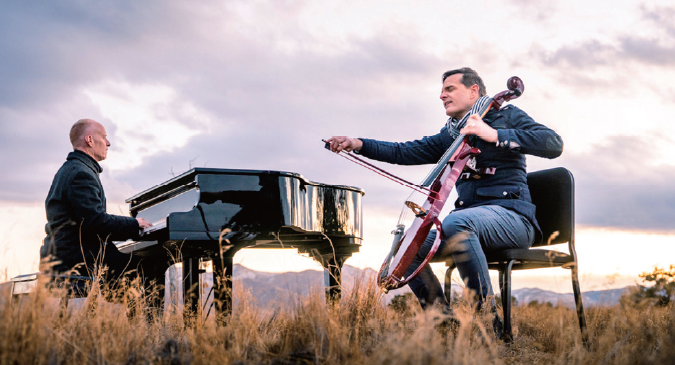On September 29th, the winner of the 2022 Van Cliburn International Competition, Lim Yunchan, successfully performed in the Cliburn Gold Medalist Concert at Fort Worth, Texas. Although Korean classical music artists receiving awards at global competitions have caused a phase shift in the industry, several issues still remain. Through this article, the Sungkyun Times (SKT) will investigate the rise of Korean classical music, its problems, and several possible solutions.
The Rise of Korean Classical Music
The History of Korean Classical Music
Classical music, which includes vocal and choral music, conducting, and the playing of musical instruments, developed in European countries during the 17th century. Traditionally, classical music was widely recognized as “Western” music, with mostly European musicians performing it. Nowadays, with the rise of globalization, classical music has spread worldwide. Classicial music was first introduced in South Korea during the Joseon Dynasty, after interacting with Western countries in the late 17th century. The opportunity to study classical music gradually increased with national liberation. During the 1970s, South Korea’s classical music achieved notable growth with the emergence of soprano Jo Su-mi and conductor Chung Myung-whun. Nowadays, Korea has become a leader in classical music as many Korean musicians have won international awards. According to 2022 SBS statistics, 36 Koreans have won in the world’s top three competitions from 2002 to this year, ranking second in the world.

Characteristics of Korean Classical Music
One of the contributors to the development of Korean classical music is the system that discovers young talents in the industry. The system is operated by cultural foundations and corporations that discover talented youths through a systematic evaluation and supports them by providing scholarships and concerts. For example, the Kumho Asiana Cultural Foundation selects talented youths through an audition twice a year and provides them wi th stage experience through the Kumho Prodigy Concert Series. According to the foundation, out of 38 Korean artists who won international competitions in early 2022, about 78% participated in the talent discovery system in Korea. Another characteristic of Korean classical music is the apprenticeship system. Here, a professor trains the student through one-to-one lessons. The Korea National University of Arts (KNUA) adopted the system in the 1980s when Korean artists who studied abroad often returned to Korea to teach local students. As a result, students could grow as global talents through such in-depth lessons provided by their teachers. The cellist Han Jae-min, who won the George Enescu International Competition at the age of 14, is a successful example of this system. With the help of lessons with his professor, Lee Gang-ho of KNUA, he could grow as a talented musician.

The Limitations of Korean Classical Music
Classical Music Becoming ”Elite Music”
Although numerous competition winners have surfaced, the biggest issue with Korean classical music still remains: the lack of popularity. According to the Korea Performing arts box office Information System (KOPIS), in the first half of 2020, classical music sales accounted for only 2.9% of total performance sales. The main reason for the lack of popularity is the common stereotype that classical music is lengthy and complicated. Listeners unfamiliar with lengthy music find it challenging to enjoy classical music since pieces often last longer than an hour, unlike pop songs that typically end in three to four minutes. Above all, it is difficult to popularize classical music in Korea due to insufficient educational broadcasting or content that introduces classical music. Even if classical music broadcasting channels exist, the types of content that can be produced are limited. Moreover, classical broadcasts’ calm and controlled atmospheres make it difficult to appeal to a young audience. In this regard, Lee Min-seo a freshman from the Department of Global Business insists that “the real problem is that classical music broadcasting lacks popularity and recognition,” criticizing the lack of freshness and attractiveness of classical music broadcasts.
No Stage for Budding Artists
On the other hand, the current structure of the Korean classical music industry provides new artists with fewer opportunities to perform on stage. Most Korean classical music stages are exclusive for successful artists rather than new and budding artists. At the 2019 Young Artists Forum and Festival (YAFF), a concert organizer criticized the current situation: “Since most concerts in Korea are held by famous performers, the majority of young artists cannot gain any opportunity to perform.” Despite the successful discoveries of new artists, such a lack of performance could discourage their development since experience gained through concerts is essential for a classical music performer. In addition, these few artists who can hold performances in Korea have had exceptional careers, with most of them having participated in major international competitions. Hence, new classical music artists have no choice but to strive to win competitions to perform in the halls. Such a phenomenon leads to the deep-seated problem of Korean classical music and society: obsession with awards and competitions for classical music. Extreme competition prevents artists from becoming free-thinking and independent. Music critic Song Hyun-min expressed concerns about this situation by commenting that “Talented youths must nourish their musical identity by learning various pieces at their young age, but they are only practicing pieces performed at competitions, which reduces their challenging spirit as a musician.” Therefore, due to the lack of opportunities to perform at concerts, new classical music artists cannot develop their musicality, which negatively impacts the Korean classical music industry.

For Further Development of Korean Classical Music
New Ways to Introduce Classical Music
Korean classical music can be popularized by creating educational and performance broadcasting content friendly and accessible to newcomers. Recently, “entertainment-style” classical education programs for beginners on media platforms such as YouTube have fostered the popularization of classical music in Korea. One example is the 2020 local entertainment show What Is All About Classics, which featured celebrity panels learning classical music through the watching of popular movies. The program received favorable reviews for introducing classical music to the public by adapting humorous explanations. Park Hyun-soon, a professor of Media and Communication at Sungkyunkwan University (SKKU), remarked “Social support for classical music will surely expand further through popular broadcasting, leading to overall development in the field.” Furthermore, artists can perform by combining classical and popular music to foster the popularization of classical music. One of the most successful cases abroad is the YouTube channel “Piano Guys,” with about 7 million subscribers. The channel gained popularity through classical music artists performing creative arrangements by mixing classical and popular music genres. For example, they created a mash-up between a classical piece, Winter, and the Disney theme song Let It Go, which received positive feedback from the public. Thus, if domestic performers produce such creative classical music performances, they might be able to popularize classical music further.

Nurturing the Classical Music Talents of Korea
Concert halls, as well as the government’s efforts, are crucial for cultivating talented young artists in Korea. First, Korean concert halls should create diverse programs to enlarge the opportunity for young artists to perform. For instance, the Seoul Arts Center is currently operating a program called “Artist Lounge,” which invites new Korean artists every month to perform at the hall. Other concert halls could also consider creating similar programs to aid new artists. In addition, policies within the cultural industry to increase the performance of the new artists are needed. The government could also borrow ideas from the “screen quota,” a policy that enforces a minimal period of screening days of domestic films to protect local movies, to create a “classical music quota.” A new policy, which enforces a minimal amount of performance of new classical music artists, would protect new artists. More extensive opportunities for the new artists to perform would lead to a lesser focus on competitions, which would further help them learn a broader range of music and find their own musical identity. Through such efforts, Korean classical artists could continue to develop their talents, which would finally lead to the blooming of the Korean classical music industry.
Nowadays, the Korean classical music scene is cultivating many talented artists. As performance critic Jung Jae-wal praised today’s era as “the renaissance of Korean classical music,” the reputation of Korean classical music has dramatically improved. Despite such success, the industry must avoid resting on its laurels and recognize its risks and limitations for a more promising future. The SKT hopes such efforts will help the Korean classical music scene rise to a higher level.
